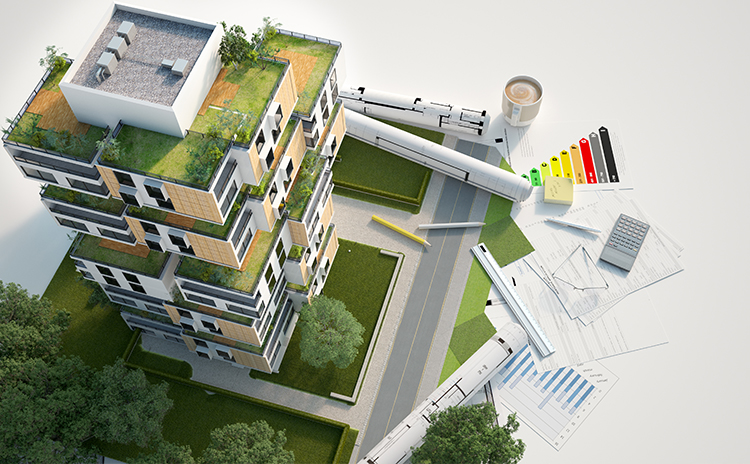India’s real estate market is optimistic that 2022 will be a turning point after three difficult years. With Covid–19 considered the new normal, 2022 is projected to be less volatile than prior years.
The year will witness tremendous development as the real estate market adjusts to changes and is poised to recover with a new era of growth, innovation, and technology advancements in a pandemic-ravaged economy.
The phrase “owning a home” became a powerful catchphrase in every discourse – in family, social, and professional circles. Despite being a challenging year in which most people’s lives and livelihoods were at stake, economic growth slowed, and job losses were widespread across industries, the real estate sector has made a remarkable comeback and is optimistic about the year 2022.
These developments have contributed to the development of an environment in which investors are more comfortable putting their money into real estate assets. If you take a peek, you will notice a paradox that pervades the industry. The Indian real estate industry offers a variety of perspectives to provide its stakeholders.
Numerous frameworks, bodies, and rules have also been introduced in the real estate market, such as RERA – Real Estate Regulatory Authority. This program was launched only to provide property purchasers with a transparent purchasing experience.
It was created to provide a timely complaints register and redressal. RERA’s primary goal is to increase home transparency and security. The federal and state governments have also established several programs to enhance the way transactions in the real estate market occur.
Governments are also attempting to expedite the completion of other blocked and delayed projects. There are initiatives and plans to encourage affordable housing, such as ESOPs and single-window clearing processes for expedited approvals.
The property and real estate sector is a traditional industry that has been slow to incorporate contemporary technologies. However, this is changing as the sector undergoes a massive digital change. Several innovative techniques and solutions are also being used throughout the industry. Such developments have accelerated the market’s growth trajectory. Property Technology businesses and scaleups harness emerging technology to enable fractional selling to entice all types of investors to acquire Grade A assets that offer a consistent Return on Investment (ROI) and long-term gain. Grade A assets appreciate regularly and consistently, are readily rented, and provide security and a good ROI.
The real estate industry reacted quickly to looming changes as part of that. This industry updated its method to adapt the extended vision and operations to changing trends and client preferences with the expert assistance of technology. The pandemic recession did not dampen the sector’s enthusiasm for long, and improvements in market and consumer optimism indicated a promising comeback.
The desire to buy a property was also quite strong in the top eight cities. According to industry figures, home sales climbed by 92 percent in July-September. In addition, the survey notes a 21% rise in new house debuts between July and September. Higher figures reflect restored consumer and investment confidence, which should be enough to keep the market growth next year. Because of increased customer demand and taste, the retail sector swiftly responded to new trends following the epidemic. Hi-street and multifunctional commercial real estate are two new asset classes that have piqued the interest of investors and consumers.
The real estate business is projected to improve along the lines of environment, governance, and sustainability. With climate change and increased urban density causing congestion, developers focus on self-sustaining communities and per capita space needs.
India is still a traditional society where families are concerned with their immediate and long-term security. With the pandemic’s uncertainty, young India wants to guarantee that their family has a permanent roof over their heads. That is a primary reason for the housing boom, particularly in the inexpensive segment.

Today, the Indian market is regarded as one of the preferred marketplaces for various worldwide companies. They have strong expansion ambitions for the Indian market. Aside from malls and shopping complexes, lifestyle changes, urbanisation, and 100% FDI in retail are fundamental reasons for developing the High-street idea in India. These venues offer higher rental income, and merchants actively invest in this market. Multipurpose development in India’s metropolitan regions, such as contemporary multi-story car parks with many advantages, can beautify the urban infrastructure. It is another developing asset class that will be important next year.
According to experts who have studied the sector, house loans are at an all-time low. Most nationalised banks provide loans with interest rates as low as 6.5 percent. It has given new and first-time purchasers more confidence. The housing industry will rise by more than 40% in the following months.
Tier 2 cities, including Lucknow, Amritsar, New Chandigarh, Faridabad, Indore, and Ahmedabad, have increased real estate buyer interest and are emerging as attractive real estate locales. Because of infrastructural development, well-planned connections, quality of life, and world-class social infrastructure, Tier 2 and Tier 3 cities are attracting many potential purchasers. There is little question that these markets will continue to drive this sector’s expansion next year.

Despite the gaps and problems, the Indian real estate sector grows stronger with each passing year. The number of issues is decreasing, and more dynamic solutions are replacing old patterns. In today’s world, developers and builders embrace technology and new concepts to create futuristic models, blueprints, and designs.
Construction methods that make a place appear larger and more open are becoming increasingly popular. Builders in Kerala are even searching for more cost-effective ways to build houses to keep pricing competitive. Another aim that the entire sector is working toward is affordable housing. The real estate industry may not be ideal, but it has always shown a desire for expansion. It will continue to work toward realising its full potential as an industry in 2022.

Buying property involves many technical terms, and one of the most confusing yet critical among them is UDS full form for most first-time homebuyers. UDS stands for Undevided Share. The UDS ...

Ever heard of row houses? They are identical low-rise homes built side-by-side in a row. Each is a single residential unit with its own living space and entrance. This design dates back to 1...
Comments